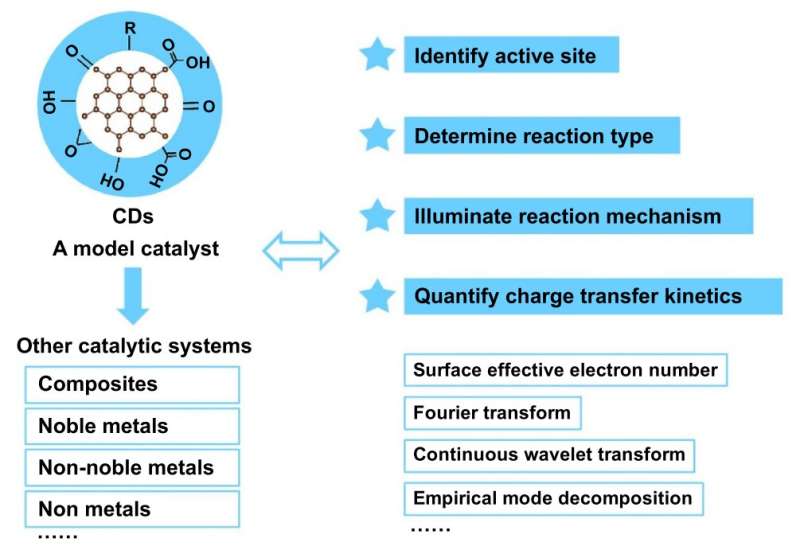Advanced multi-functional carbon dots in photoelectrochemistry-based energy conversion

The research group led by Professor Zhenhui Kang from Soochow University introduced the synthesis, structural characteristics, and photoelectric chemical properties of carbon dots (CDs) and their applications in photocatalytic conversion. In addition, a new technique of photocatalytic process characterization, transient photo-induced voltage/current (TPC/TPV), in CDs catalytic system is also discussed.
The unique advantages and great potential of CDs in clean energy conversion and storage cannot be ignored. In addition, photoelectrocatalysis has a very complex interfacial process, so it is very difficult to deeply study the mechanism. The existing characterization technologies are easy to obtain steady-state information in the photoelectrocatalysis process, but it is difficult to reflect the change during the reaction process.
Therefore, Prof. Kang's article, published in the International Journal of Extreme Manufacturing, introduced a new method of in-situ analysis and kinetic characterization, with CDs as an excellent model. TPV technology was used to collect and analyze the dynamic process affected by CDs in photoelectrocatalytic process. As new non-contact detection technologies, transient photo-induced voltage/current (TPV/TPC) have been developed to detect and study the charge transfer kinetics, which can sensitively reflect the complex electron separation and transfer behavior in photo-/electro-catalysts.
By combining the rotating electrode technique with the transient photovoltage response, a method model for the dynamic process of photoelectron directional extraction and photocatalytic forcing in situ is established. The basic idea involved in the method is based on the directional charge movement in response to photovoltage. Taking the water decomposition reaction as an example, the number of transferred electrons in the photocatalytic half-reaction can be obtained in situ by transient light-induced current changes in the disk/ring electrode.
Data collected with a temporal resolution of 50 ns by shining a 4 ns pulsed laser onto the sample can provide detailed information on charge transfer, storage, recombination processes, and photocharge-based catalytic reactions. The entire representation covers reaction times from microseconds to seconds. By comparing the parameters such as maximum intensity, curve shape, maximum intensity time, integrated area and decay constant, the kinetics of interfacial electron transport and reaction kinetics of in situ catalytic processes can be obtained directly or indirectly. These photoelectric response data can help us to determine the catalytic active site, catalytic center and reactant characteristics, and can even be used to discover new properties of catalytic materials beyond expectations.
Professor Kang said, "CDs may not represent the most efficient catalysts, but they bring a revolutionary understanding on catalytic mechanism and catalyst design principle. The TPV technology may not represent the most advanced and universal techniques, but it brings a new and specific information on electron transfer kinetics for catalytic mechanism and catalyst design."
More information: Yunjie Zhou et al, The advanced multi-functional carbon dots in photoelectrochemistry based energy conversion, International Journal of Extreme Manufacturing (2022). DOI: 10.1088/2631-7990/ac8e3a
Provided by International Journal of Extreme Manufacturing


















